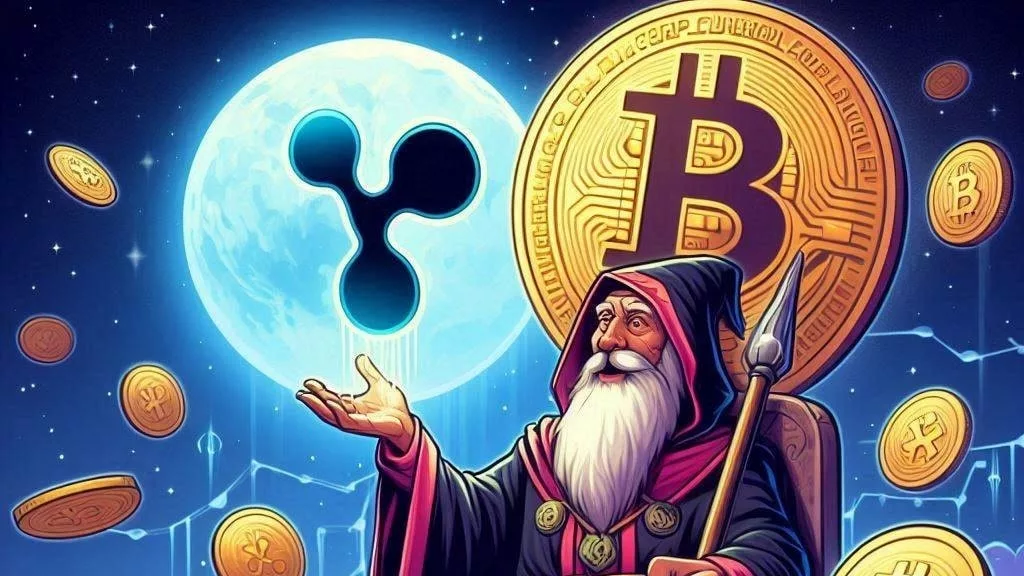
Former Ripple director Matt Hamilton weighed in on this discourse, declaring XRP as a superior option compared to Bitcoin. Speaking on the Mr. M Podcast, Hamilton focused on key factors such as scalability, transaction costs, and the practical applications of both cryptocurrencies.
One of the central points in Hamilton’s argument is the scalability of XRP compared to Bitcoin. He emphasized that XRP is better suited for large-scale use, particularly when it comes to handling global transactions. According to Hamilton, Bitcoin’s network processes only seven to ten transactions per second, which he identifies as a significant limitation. This low throughput means that, on average, the global population could only make two transactions in their lifetime using Bitcoin.
Hamilton explained that Bitcoin’s scalability challenges necessitate the use of additional systems, such as Layer-2 solutions or custodial networks, to enhance its transaction capacity. However, he noted that relying on these systems could compromise Bitcoin’s fundamental principles of decentralization and self-custody.
In contrast, the XRP Ledger (XRPL) is built for high performance. Hamilton pointed out that last year, the XRP network saw its transaction processing capacity soar from 1,500 to an impressive 3,400 transactions per second. This significant increase in scalability positions XRP as a more viable option for meeting the demands of a growing global economy.
Another crucial aspect of Hamilton’s comparison is the cost associated with transactions on each network. He criticized Bitcoin’s high transaction fees, which he believes will continue to rise as mining subsidies diminish over time. This trend raises concerns about Bitcoin potentially becoming a cryptocurrency reserved for banks and wealthy investors, effectively sidelining the average person. Hamilton noted, “The everyday person is just not gonna be able to transact on Bitcoin.”
In stark contrast, transactions on the XRP Ledger are remarkably affordable, with an average cost of just $0.0002 per transaction. This cost-effectiveness makes XRP a more accessible option for everyday users and businesses alike, enhancing its practicality for real-world applications.
Addressing a common misconception, Hamilton also tackled the idea that XRP can be frozen on the XRPL. This point arose during the podcast when the host mentioned a case where an individual’s XRP was frozen after selling a large amount. Hamilton clarified that this incident involved Ripple co-founder Jed McCaleb and that the funds were seized on an exchange, not within the XRPL itself.
He stressed that if the funds had remained on the XRP Ledger, they could not have been frozen. Hamilton further pointed out that while authorities can freeze assets on other networks, such as Bitcoin, XRP’s architecture does not permit such actions on the XRPL. This feature enhances the sense of security and autonomy for XRP holders.
Hamilton’s advocacy for XRP also stems from its practical applications in various sectors, particularly in financial services. The XRP Ledger’s capabilities make it an attractive option for remittances and cross-border transactions, where speed and cost are critical factors. Its design allows for rapid transfers, making it a powerful tool for businesses that need to move money efficiently across borders.
In a world where digital currencies are increasingly being adopted, the ability to facilitate seamless and low-cost transactions is paramount. Hamilton believes that XRP’s infrastructure positions it well to capitalize on this growing demand, setting it apart from Bitcoin, which may struggle with its scalability and cost issues in the future.
In a rapidly changing cryptocurrency landscape, Matt Hamilton’s insights provide a compelling argument for why XRP may be a better choice than Bitcoin for many users. With its enhanced scalability, lower transaction costs, and unique features that prevent the freezing of assets, XRP is positioned as a practical and efficient alternative for everyday transactions and global use.
As the cryptocurrency market continues to mature, the debates over which assets will lead the charge are likely to intensify. Hamilton’s perspective sheds light on the evolving capabilities of cryptocurrencies and their potential to serve real-world needs, prompting both investors and users to consider the long-term viability of XRP in comparison to Bitcoin. Whether you’re a seasoned investor or a curious newcomer, these insights are vital as the world of digital assets continues to expand.


Get the latest Crypto & Blockchain News in your inbox.